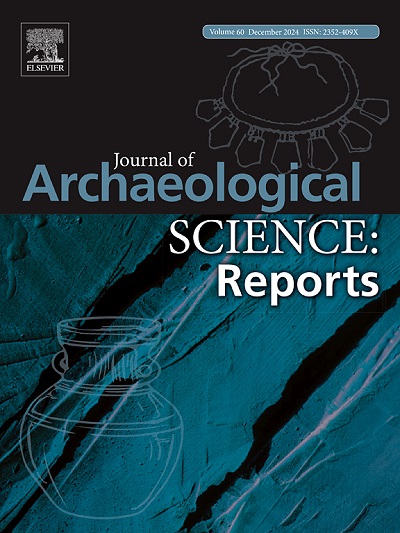利用考古组合重建前欧洲海洋栖息地:以新西兰Ōtata midden为例
IF 1.5
2区 历史学
0 ARCHAEOLOGY
引用次数: 0
摘要
Ōtata米登遗址R10/139,位于新西兰豪拉基湾Ōtata岛上,是一个分层遗址,其年代跨越了欧洲占领新西兰之前的大部分时间(公元1350-1800年)。这为研究前欧洲海洋环境中潜在的人为变化提供了难得的机会。用激光烧蚀电感耦合质谱(LA-ICP-MS)分析了三层中层鲷鱼耳石的钡(Ba)和锶(Sr)成分,并使用行为改变点分析(BCPA)分析了距离核心1500µm的结果数据,大致相当于鱼生命的头两年。这表明,幼年鲷鱼的行为没有改变,但第二年的Ba浓度改变了。这是由于人为的景观变化改变了淡水与海湾海水混合的区域的水文。本文章由计算机程序翻译,如有差异,请以英文原文为准。
Reconstructing pre-European marine habitats using archaeological assemblages: A case-study from the Ōtata midden, New Zealand
The Ōtata midden, site R10/139, on Ōtata Island in the Hauraki Gulf, New Zealand, is a stratified site with dates spanning most of the pre-European occupation of New Zealand (cal 1350–1800 CE). This provides a rare opportunity to examine potential anthropogenic changes in the pre-European marine environment. Snapper (Chrysophrys auratus) otoliths from three midden layers were analysed for barium (Ba) and strontium (Sr) composition with Laser Ablation Inductively Coupled Mass Spectrometry (LA-ICP-MS) and the resulting data for the first 1500 µm from the core, roughly equivalent to the first two years of the fish’s life, were analysed with Behavioural Change Point Analysis (BCPA). This showed that juvenile snapper behaviours did not change but that Ba concentrations in the second year of life did. This is attributed to anthropogenic landscape changes altering the hydrology of the zone where freshwater mixes into the marine waters of the gulf.
求助全文
通过发布文献求助,成功后即可免费获取论文全文。
去求助
来源期刊

Journal of Archaeological Science-Reports
ARCHAEOLOGY-
CiteScore
3.10
自引率
12.50%
发文量
405
期刊介绍:
Journal of Archaeological Science: Reports is aimed at archaeologists and scientists engaged with the application of scientific techniques and methodologies to all areas of archaeology. The journal focuses on the results of the application of scientific methods to archaeological problems and debates. It will provide a forum for reviews and scientific debate of issues in scientific archaeology and their impact in the wider subject. Journal of Archaeological Science: Reports will publish papers of excellent archaeological science, with regional or wider interest. This will include case studies, reviews and short papers where an established scientific technique sheds light on archaeological questions and debates.
 求助内容:
求助内容: 应助结果提醒方式:
应助结果提醒方式:


